A dispatch from the Substack Community team
How it's going cultivating writer communities at Substack HQ.
When you last heard from the People & Company team, we shared that Substack had acquired us.
We also promised that People & Company would not disappear completely. We’d continue to share our research with you via this “Get Together” Substack and our podcast, just at a less frequent pace.
I apologize that it’s taken so long to send an update. We’ve also failed to keep the podcast fresh! As you can imagine, it’s been a busy first few months at the fast-growing startup. Since starting in the spring, Kevin, Katie and I have kickstarted many programs and tactics with Kai advising us on the journey. We had the chance to meet our coworkers in person at Substack’s fourth birthday bash in San Francisco (photos below).
Kevin and I have grown our respective teams. Kevin recently welcomed Kerianne, the services program manager, and Maggie, the services creative producer, to the Writer Services team. Katie and I recently added Rose as storytelling lead, Jasmine as product specialist, and Kelsa (a previous “Get Together” podcast guest) as programs lead to the Community Team.
Today, I wanted to share more about what we have been up to on the Community Team.
Community at Substack
Before going deep into tactics, let’s cover some background on Substack. Why was People & Company the first acquisition a fast-growing tech platform made? Why does investing in the community matter so much to Substack?
The Substack founders are thinking about building their company differently than most tech companies. Substack doesn’t see itself as simply software to scale into oblivion. Instead, the founders want to offer a complete “stack” of tools and services created specifically for writers building independent subscription publishing businesses.
If you want to read more about Substack’s founding, here’s a deep dive I wrote up before People & Company was acquired by Substack.
Our business model is the reason we can focus so holistically on writer success. Substack is free to use until writers turn on paid subscriptions, in which case we charge a 10% fee. It may not sound sexy, but that simple business model ensures that our team’s incentives are aligned with our writers. Substack only makes money when writers do. We succeed when writers succeed.
The teams at Substack HQ go about helping independent writers succeed in two ways:
Building subscription publishing software for writers. The engineers, designers, product managers and support specialists who bring this software to life make up about half of the company.
Providing writers with everything that they will need to run an independent media business outside of our software. We call this other half of the company the Writer Team.
The Community Team I am tasked with building and the Writer Services team Kevin leads are two critical pillars of Substack’s Writer Team. When we arrived, Substack’s Writer Team had an incredible crew of folks focused chiefly on the established writers publishing on Substack. They foster one-to-one relationships with writers who have the potential to wildly succeed with a subscription publishing model and support them as they transition to writing independently. For some established writers, Substack had piloted health care stipends, financial advances, design and editing support, and more to allow them to focus on writing and building their Substack publications full time. Many established writers run big media businesses on Substack, thus meriting Substack’s investment in such high-touch support as a small startup.
While a small number of these established journalists and writers are mentioned in much of the press about Substack, the reality today is that thousands more writers are active on Substack and passionate about their publications. These writers are the as-of-yet “undiscovered, under-appreciated, under-resourced writers” that we want to see realize their potential. Think of these writers as Substack’s equivalent of “YouTubers”—the homegrown talent you wouldn’t otherwise know about if not for their writing on Substack. These are writers like Christopher Curtis, Alicia Kennedy, Paul Szoldra, and Clara Parkse who willed their publications into being.
People & Company was brought on to build out how Substack supports emerging writers at scale. My team immediately began investing in this category of writers, and Kevin’s Services team is now running experiments for this group of writers, too.
Thus, Substack’s acquisition of People & Company was an investment in the future success of these as-of-yet undiscovered writers.
Building with emerging writers
The Substack Community team’s mission is to accelerate and celebrate emerging writers.1
To do that for the thousands of emerging writers using Substack, our team can’t take a high-touch approach. The number of emerging writers on Substack is growing too quickly for that, so our method will be to connect writers to other writers for support. In short: we will build with writers.
If we can connect emerging writers for peer guidance and collaboration, our hypothesis is that we can supercharge their chances of success and help make Substack’s network of writers robust in the process.
Here’s a quick look at the tactics our Community Team is experimenting with to accelerate and celebrate emerging writers:
Writer Events
The Substack writer community lacked a shared activity—the purposeful, participatory, and repeatable event that communities form around. So, we tested the following:
Office hours: On Thursdays, we bring writers together to share guidance on burning questions about publishing, growing, or going paid on Substack. The Substack team (including the founders) joins in for these hour-long Q&As.
One year toasts: When an emerging writer hits one year of consistently writing on Substack, we invite them to toast to their accomplishment with us and fellow writers.


Shoutout threads: Once a month, Substack writers and the Substack team share what we’ve been reading and inspired by recently. Here’s one of our favorite pieces of feedback so far was from a participating writer in a recent shoutout thread: “These shoutout threads are starting to feel like an episode of Cheers, in the best kind of way. (‘HEY NORM!’) Except maybe the bar is the size of Boston and growing bigger every week...”
Storytelling
Every writer who creates a publication is encouraged to subscribe to the company’s own Substack (on.substack.com), which our team runs. There and on substack.com, we feature role model writers for the rest of the writer community to see, bringing to life what is possible with the platform.
Stories: Every week, we publish stories that spotlight emerging writers through Substack’s publication, to which hundreds of thousands of writers subscribe.
Featured category: Each week, we cycle out the writers featured on Substack’s homepage and discover tab. We feature emerging writers going deep into a precise topic and exemplify best practices, like posting regularly and engaging with readers. (Do you know someone we should feature? We source tips from the writer community here.)
Interviews: We host and publish interviews with writers who have succeeded on Substack to share their tips, data and insights. Here’s an example of an interview with a writer on the cutting edge of serializing fiction on Substack.
Programs
Substack has a long history of fellowships, grants, and mentorship programs. Our team will be deepening and expanding those investments.
Substack Grow: A crash course for writers covering the essential knowledge writers need to succeed on Substack. We ran six live sessions over six weeks, complete with an online community space for participants and thorough recaps published for the broader writer community like this one.
We don’t yet know which of these investments will have the most tangible impact on emerging writers’ success since the programs haven’t lived and breathed for long enough to know. But we’re tracking the data and the qualitative feedback and aspire to keep you posted here with what we learn.
What’s next?
Before joining Substack, Kevin, Kai and I created the Get Together framework to help community builders prioritize what to focus on next. We designed it as a community-building order of operations because we quickly realized that community leaders weren’t at a loss for ideas—they had plenty of ideas for their communities. Instead, the challenge was knowing what to focus on next, and what investments to put aside until later.

Using this framework as our guide, our Substack Community Team has achieved the following in its first five months:
✅ Pinpointed which writers to focus on
✅ Started hosting shared activities
✅ Kickstarted writer-to-writer conversations
Looking ahead, the most important thing for us to do will be to get more writers talking to one another and paying attention to who keeps showing up to those spaces. These hand-raisers have the potential to become future leaders of the Substack writer community. They will ensure that the Substack writer community is resilient, authentic, and distributed. Increasingly, it will be our team’s job to get out of the way so that our writers can lead their communities.
Onwards,
Bailey + Kevin, Katie, and Kai
Friends of People & Company & Substack
The following pictures are from Substack’s fourth birthday bash in San Francisco, just before the crest of the delta variant took in-person hangs away from us. We were able to mingle with our new coworkers and some of the friends who supported People & Company on our journey also joined us.
It was a meaningful moment for Kevin, Katie and I, so we thought we’d share some photos of the evening and the people with you all.
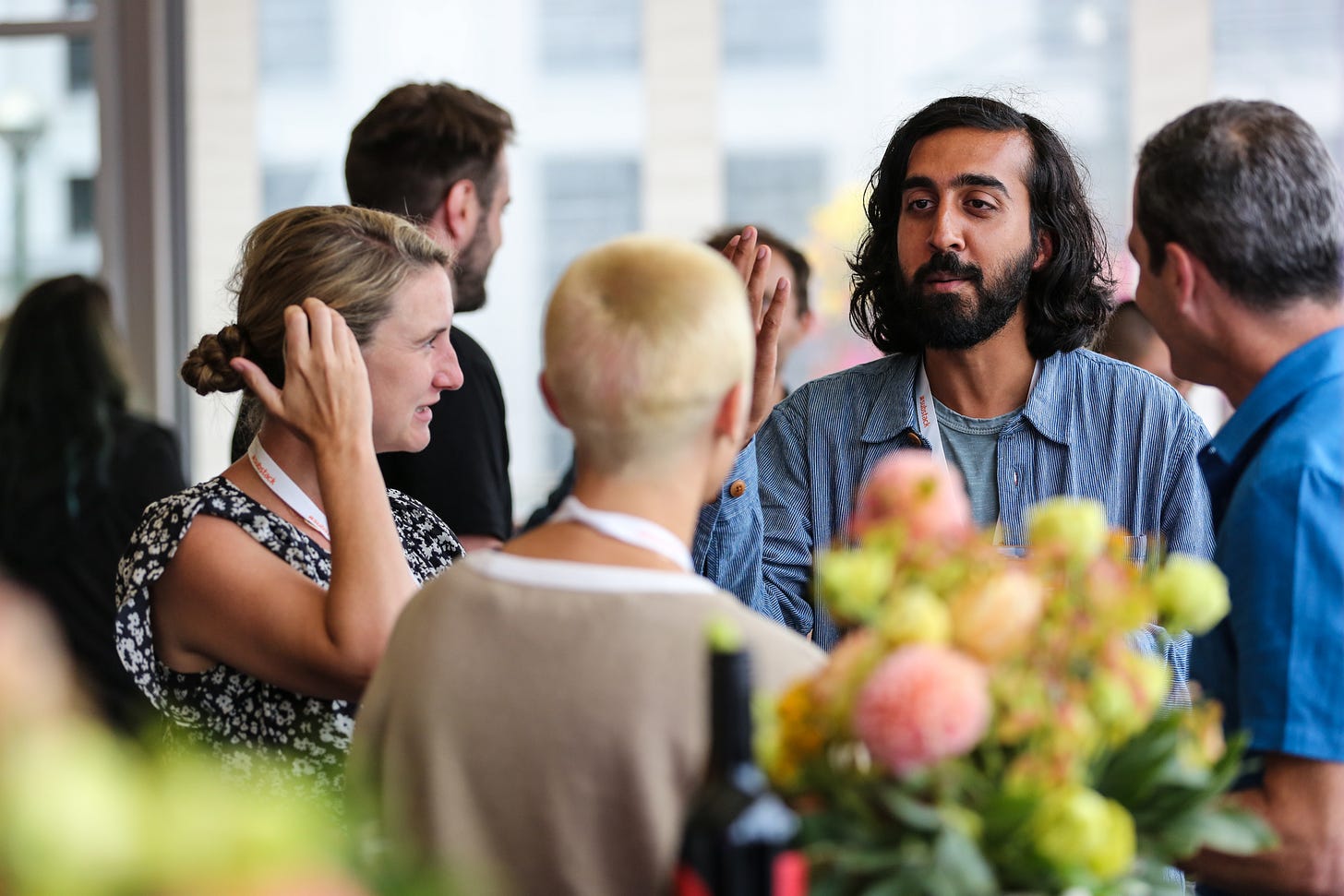
Want more case studies and inspiring community stories like this one? This “Get Together” newsletter has you covered. More on all things Get Together here.
Kevin will update you on where the Services Team he is running is headed in due time. For this note, we’ll focus on the Substack Community team.


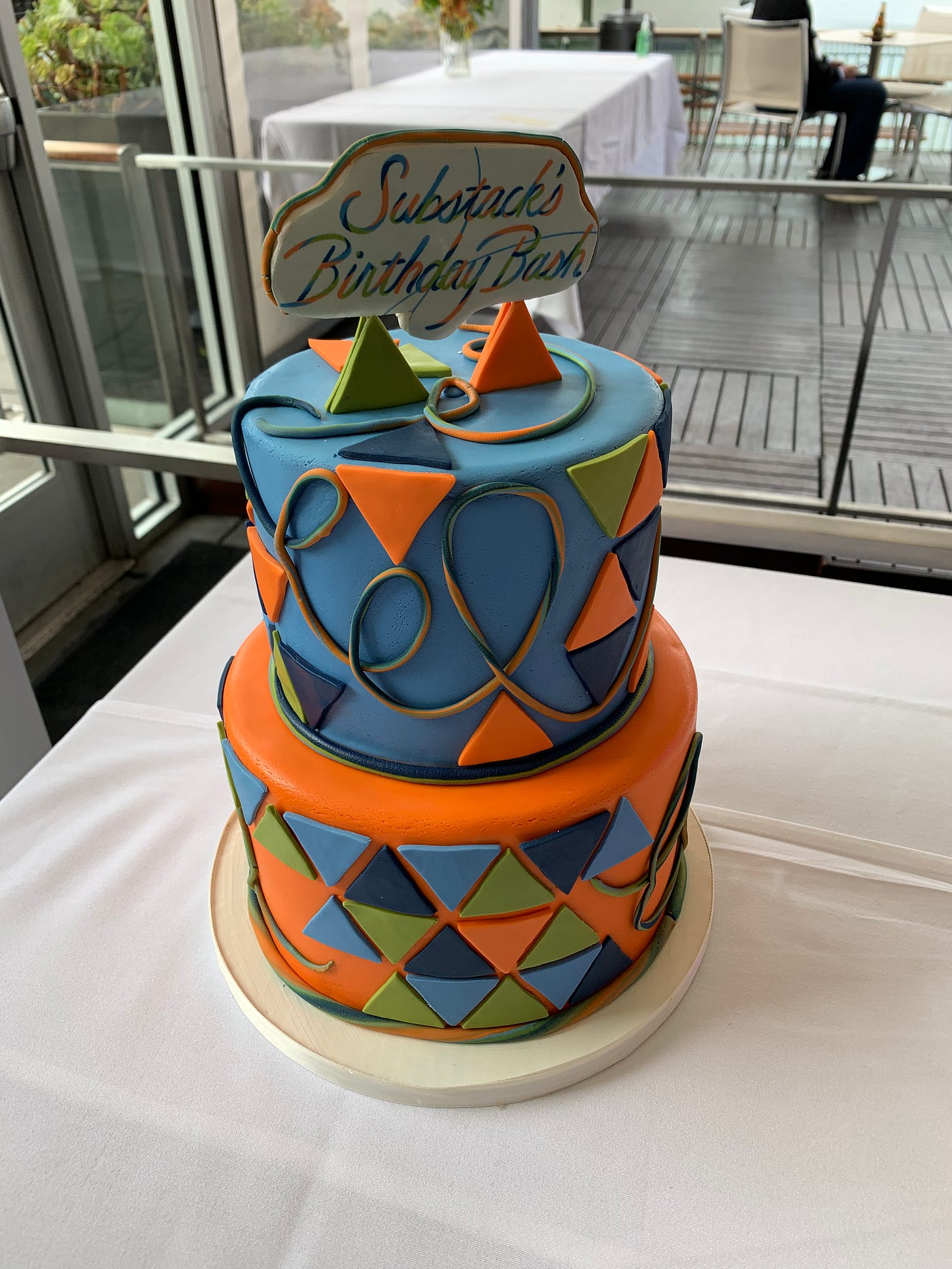
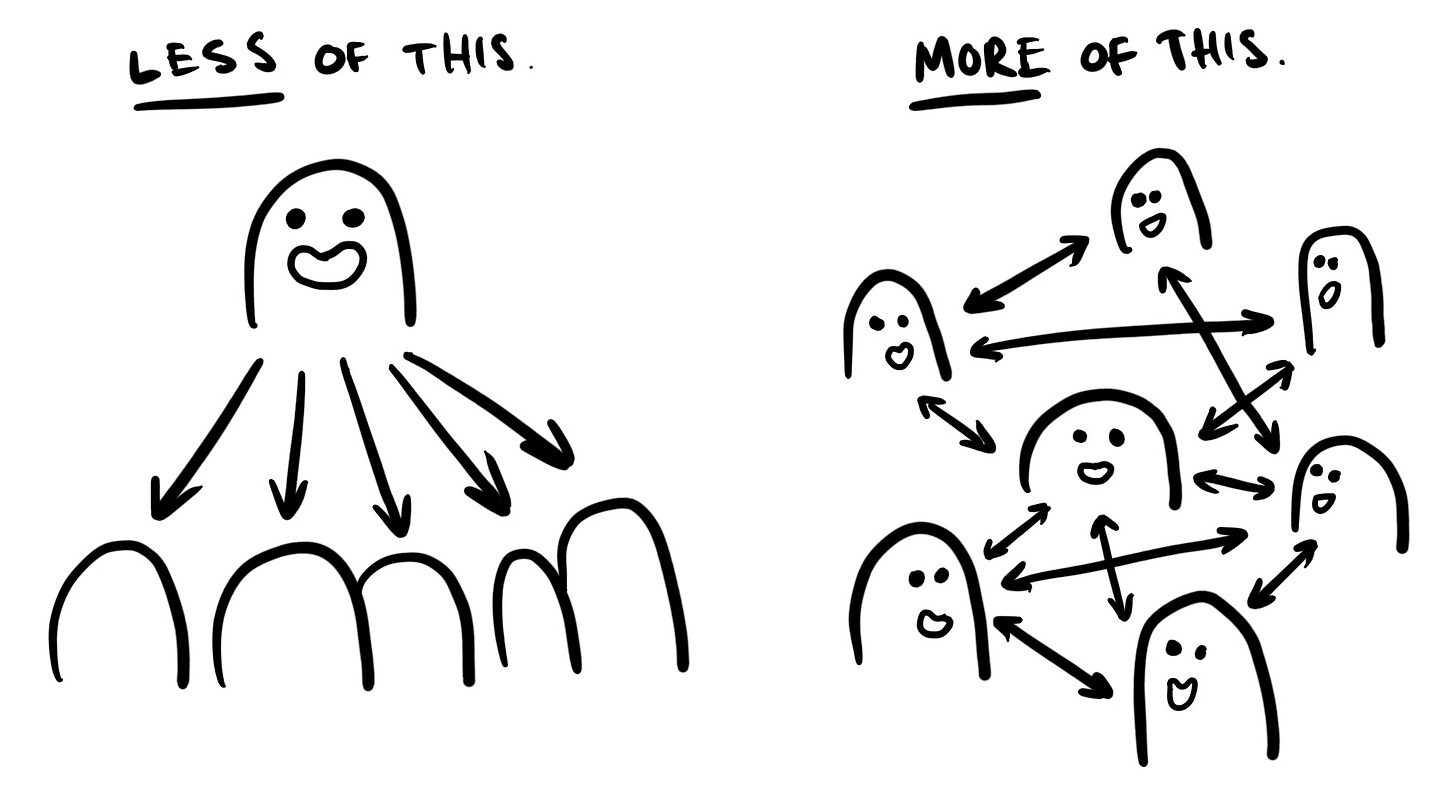
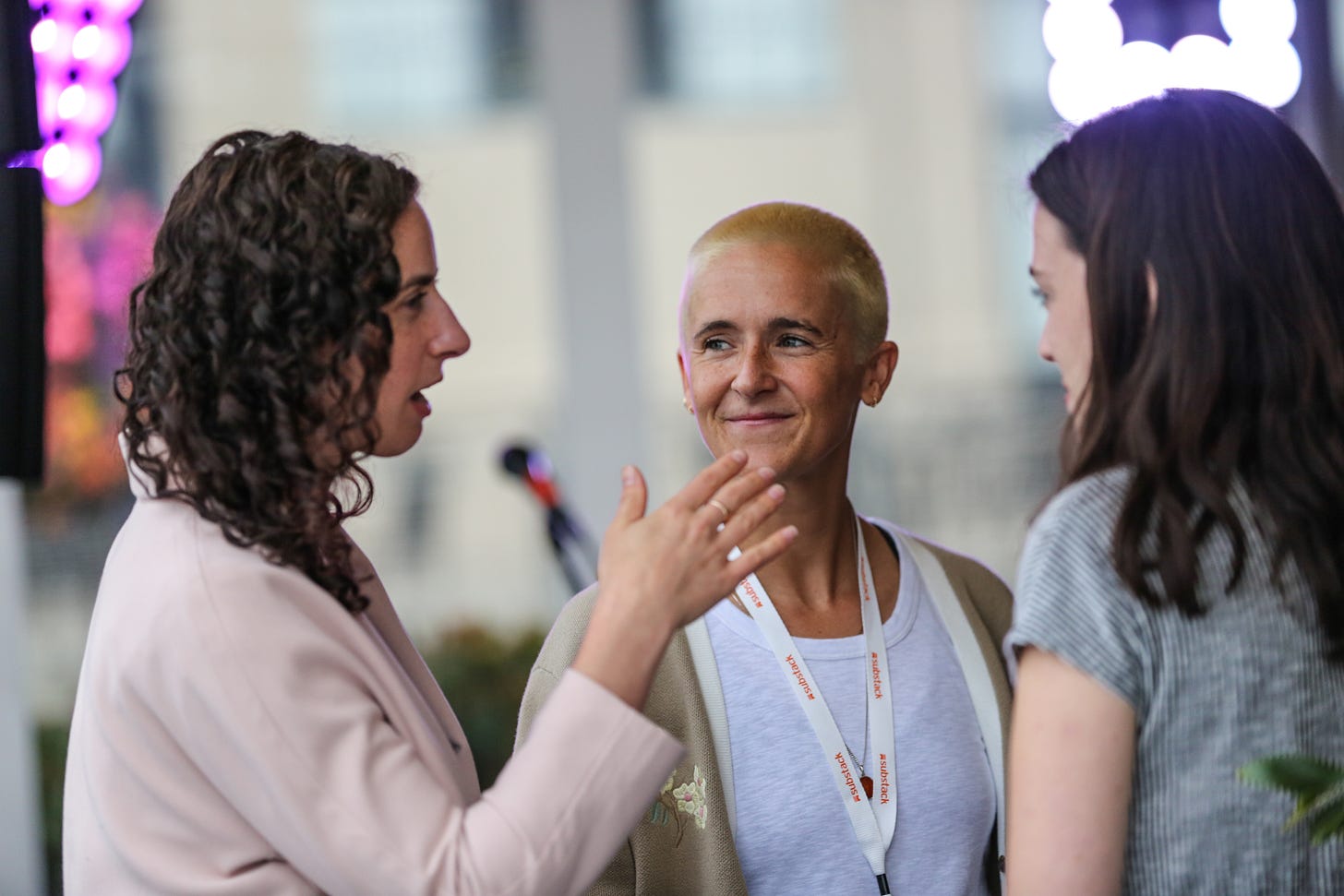
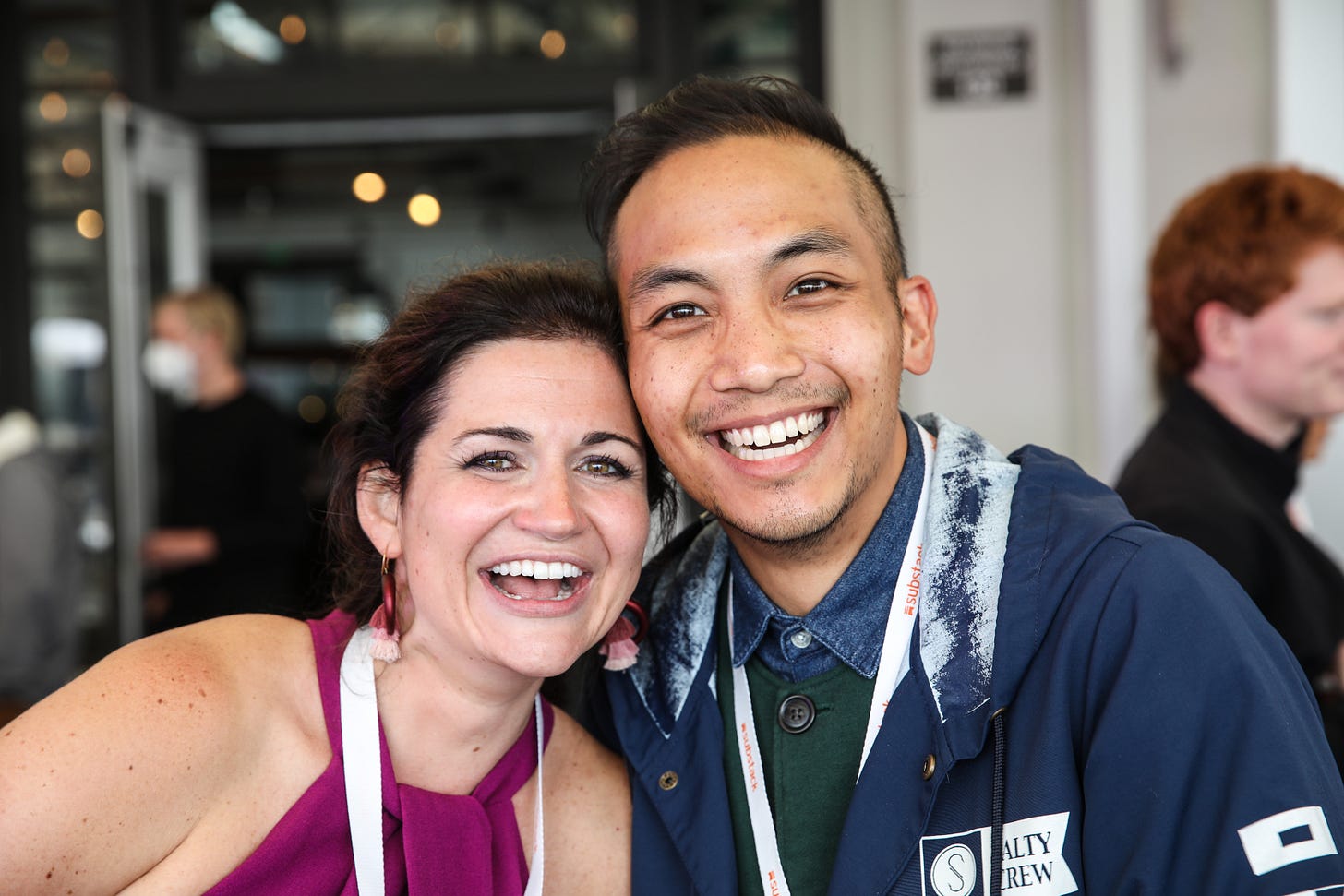
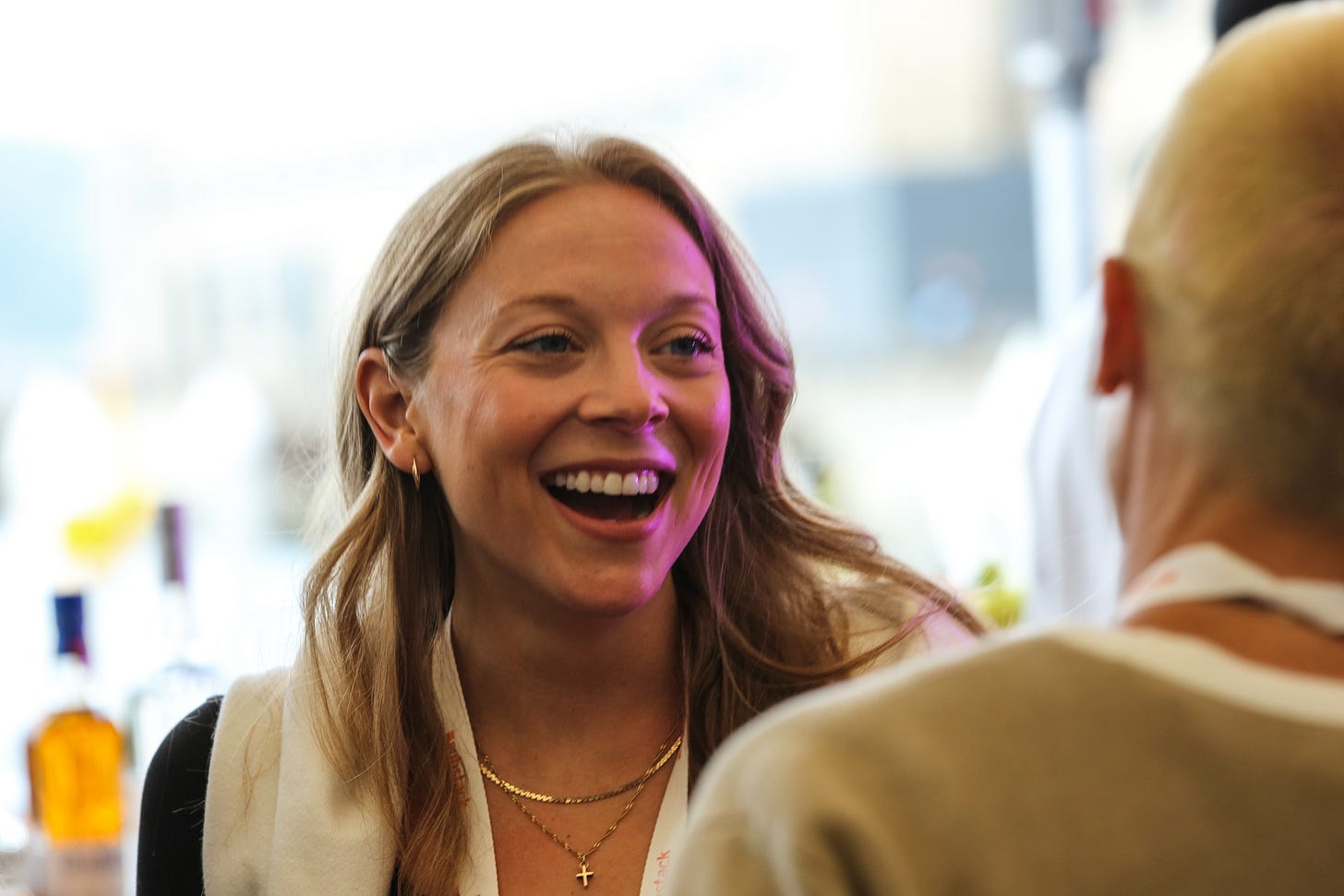
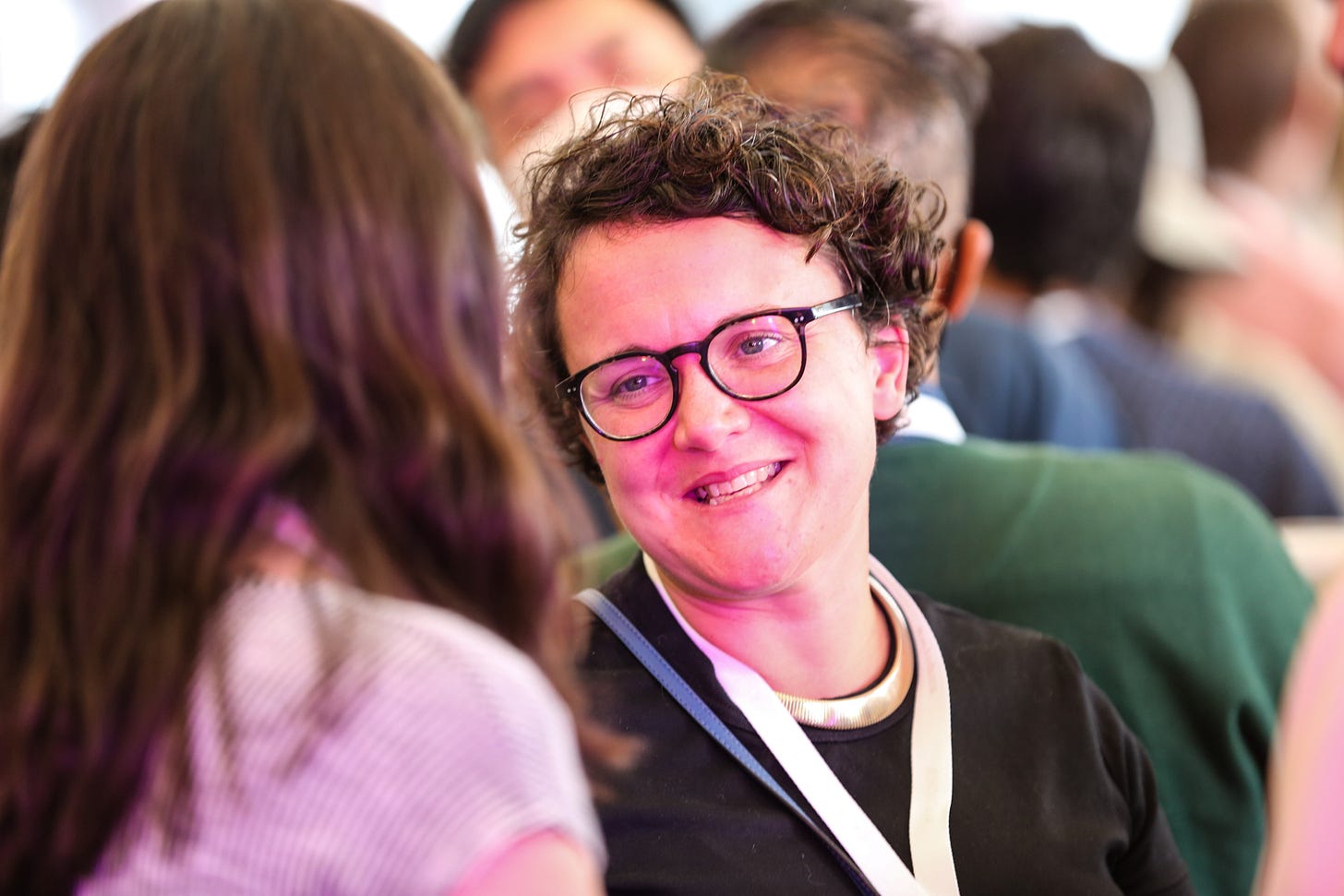
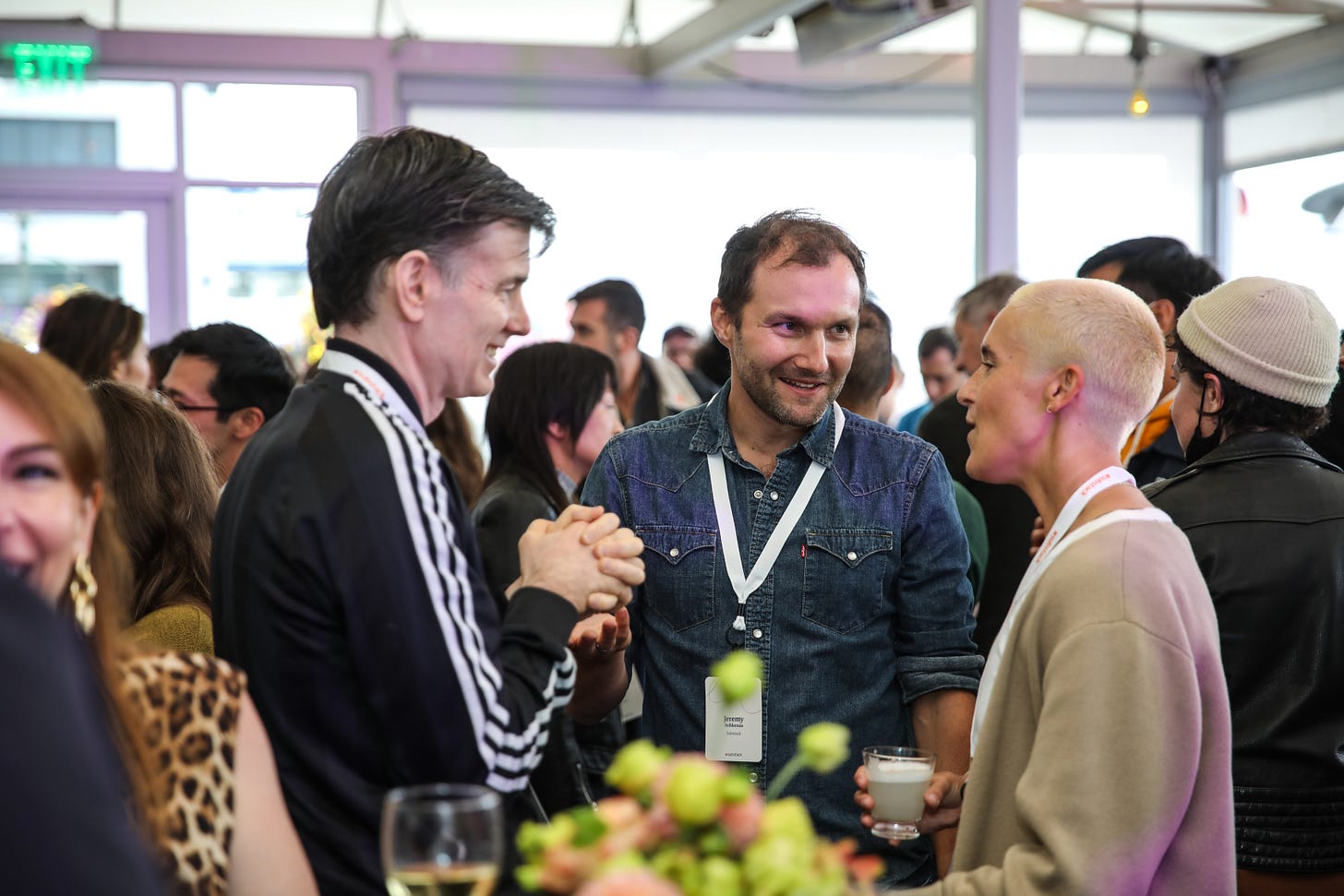
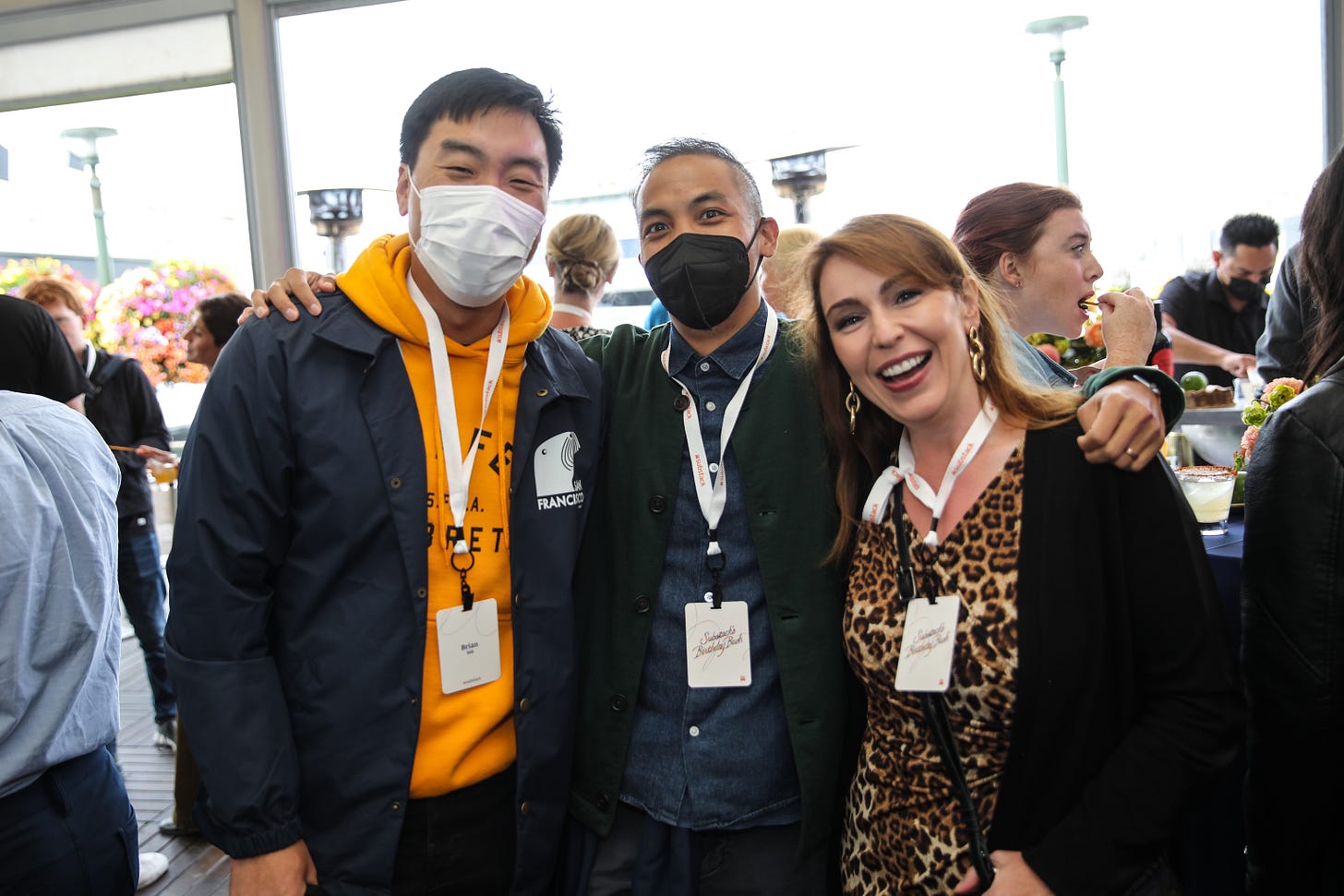
So excited to see how you’re building up. This is such an exciting time to be a writer!
So glad to read this update, to see your continuing magic, and to see your faces :)
Keep up the amazing work Bailey, Kai, Kevin and Katie!